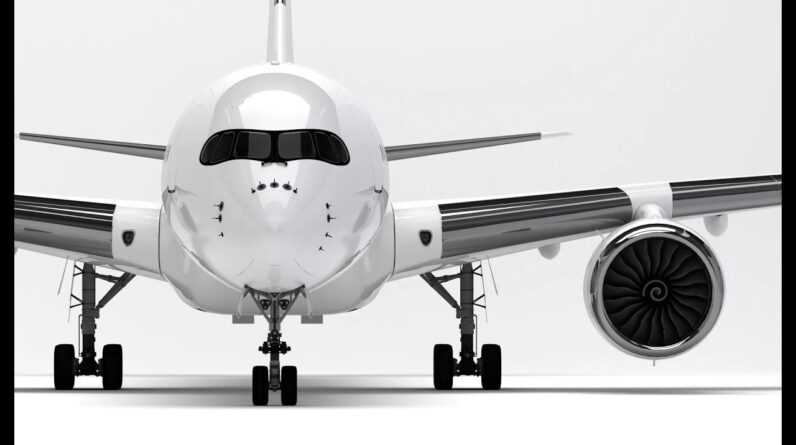Travel by private jet is one of the safest and most comfortable to get around, but even these flights can be affected by adverse weather conditions. Bad weather, whether snow, wind, fog, or thunderstorms and cumulonimbuses, not only affects flight safety but can also result in delays, detour or cancellations. Unlike scheduled flights, private aviation offers more flexibility but also requires meticulous management of weather risks. Let’s look in detail at how weather conditions affect private jet flights, with a focus on the main challenges that can arise during the winter months or when extreme weather is present.
Ice, Frost and Snow: The Challenges of Extreme Cold.
Freezing temperatures and snowfall are mainly a problem on the ground. Although private jets are designed to withstand extreme temperatures and adverse weather conditions at altitude, the situation may be different during takeoff and landing. Before takeoff, it may be necessary to perform the de-icing
, a process that removes ice and snow from aircraft surfaces to ensure flight safety. This process, although essential, involves additional costs and may cause delays.
Click here to learn what de-icing or de-icing operations are.
In addition, the slope must be properly cleaned and free of snow accumulation to allow safe operations. A snowy or icy runway, in fact, could compromise grip during takeoff or landing. Even the Slope cleaning operations by snowplowing, chemical agents, and spreading of sand and granules, and the grip tests to assess the coefficient of friction can cause slight delays in the takeoff of private jets.
Thunderstorms and Lightning: The Risk of Cumulonembers.
Thunderstorms are among the most feared weather phenomena in aviation. Storm clouds, known as cumulonimbus (CB), can cause turbulence, wind shear and lightning.
- Turbulence and wind shear: The updrafts and downdrafts within a thunderstorm generate turbulence that can make flight erratic. Wind shear, on the other hand, is caused by sudden changes in wind speed and direction, posing a risk especially during takeoff and landing.
- Lightning: Although aircraft are designed to withstand lightning, pilots avoid flying directly through a thunderstorm to minimize risk.
Although airplanes are designed to withstand lightning, pilots always avoid passing through thunderstorm areas.
Private jets have an advantage over scheduled flights because they can get on or off more quickly to avoid the most turbulent areas. However, if a thunderstorm is present near the departure or arrival airport, the flight may be delayed or rescheduled to ensure safety.
How to deal with turbulence aboard private jets: tips for a smooth flight
Fog and Poor Visibility: An Obstacle to Airport Operations.
Fog is one of the main causes of flight delays, as it reduces visibility during both takeoff and landing.
- Low Visibility Procedures (LVP).: When visibility drops below 1,500 meters, airports activate specific procedures that limit the number of takeoffs and landings to ensure safety.
- Flexibility of private aviation: A significant advantage of private jets is the ability to change flight plans at the last minute, choosing alternate airports with better weather conditions. This is not always possible for scheduled flights, which must follow predetermined routes.
Although many private jets are equipped with advanced systems for flying in low visibility conditions, air traffic can still be slowed down, especially at smaller airports, which are often less well equipped than major hubs.
Strong Winds: A Variable Not to Be Underestimated
Wind is one of the most common weather phenomena affecting flights, both in the air and on the ground. Its intensity and direction can have significant effects on travel time, aircraft stability, and takeoff and landing procedures.
- Headwind and fair wind: When the airplane flies against the wind, the ground speed decreases, prolonging the travel time. Conversely, a favorable wind can reduce flight time by up to 20%. This phenomenon is particularly evident during transatlantic flights, where jet streams can speed up or slow down the flight by hours.
- Side wind: One of the most difficult situations is crosswind, which hits the aircraft in a direction perpendicular to the runway. This requires high pilot skill, especially during landing, and can limit operations at airports with runways that are not perfectly aligned.
Private jets, because of their smaller size and lighter weight than commercial aircraft, are more prone to turbulence. However, advanced pilot training and onboard technology allow even extreme windy conditions to be handled safely.
Extreme Temperatures: Hot or Cold, No Problem for Private Jets
Temperature extremes, both cold and too hot, affect aircraft performance, but private jets are designed to cope with these conditions as well.
- Cold weather: As mentioned earlier, de-icing and runway maintenance are crucial in freezing conditions, but once in the air, private jets operate perfectly even in extremely cold temperatures.
- Warm climate: Hot air is less dense, which could reduce the efficiency of engines and increase the distance needed for takeoff. However, pilots are trained to compensate for these effects, ensuring safe operations even on the hottest days.
As we have seen, excessive high temperatures can also affect the performance of a private jet. Similarly, extremely low temperatures can result in longer ground preparations, such as de-icing. In any case, the temperature inside the cabin always remains adjusted according to passengers’ preferences, ensuring maximum comfort.
 Strategies for Minimizing Inconvenience and Delays
Strategies for Minimizing Inconvenience and Delays
Travelers who choose to charter private jets for their travel can count on a level of flexibility and assistance that far exceeds that of commercial flights, especially in severe weather situations. Below are some strategies adopted by PrivateJetFinder to ensure safe travel and minimize disruption.
Constant Weather Monitoring
Private jet companies work with expert meteorologists to analyze real-time weather conditions along planned routes. This continuous monitoring allows them to:
- Identify optimal time windows for takeoff and landing.
- Modify routes during disruptions, ensuring smoother travel.
- Anticipate in advance possible delays due to snow, ice, high winds, thunderstorms and cumulonimbuses allowing customers to stay informed.
Flexible Planning
Flexibility is one of the greatest advantages of chartering a private jet. Customers can:
- Postpone the flight until weather conditions improve.
- Anticipate departure in case of a worsening forecast.
- Reschedule without having to adhere to the strict schedules of commercial airlines.
A proactive approach makes private jets an ideal solution for those who do not want to compromise safety or comfort.
PrivateJetFinder: The Value of Choosing a High-Quality Service
Rely on a reliable private jet rental service like PrivateJetFinder guarantees not only comfort, speed and effective solutions, but also expert support at critical moments. Even in adverse weather conditions, a team of experts will know how to handle every situation by offering tailored solutions.
Global network. The ability to draw on a large network of airports and operators, for example, enables rapid response to changes while maintaining excellent service quality.
Choose your destination and rely on PrivateJetFinder to travel with the peace of mind that you always have a secure plan and an experienced team by your side, ready to handle any unforeseen circumstances.
The post How Adverse Weather Conditions Affect Private Jet Flights: Everything You Need to Know first appeared on Private Jet Finder BLOG.




